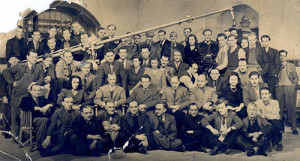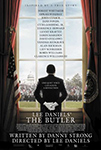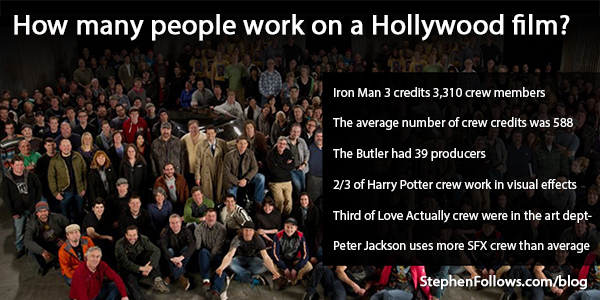 Last week I ran a course in Malaysia for the Met Film School and the Malaysian Government. Malaysia is set to be a popular destination for Hollywood projects, thanks mostly to the 30% tax break and the brand new Pinewood Studio complex. The studio is not officially open yet but already ‘Marco Polo’ has set up shop and is hiring. The Malaysian government is funding courses to prepare locals for work on huge Hollywood productions and my course last week was for would-be Production Assistants.
Last week I ran a course in Malaysia for the Met Film School and the Malaysian Government. Malaysia is set to be a popular destination for Hollywood projects, thanks mostly to the 30% tax break and the brand new Pinewood Studio complex. The studio is not officially open yet but already ‘Marco Polo’ has set up shop and is hiring. The Malaysian government is funding courses to prepare locals for work on huge Hollywood productions and my course last week was for would-be Production Assistants.
In order to give the students a sense of the scale of these productions I asked them to guess how many people worked on the movie ‘Avatar’. Guesses ranged from a few hundred up to a thousand. The actual figure (according to IMDb) is 2,984.
This got me thinking about what the number of crew members could tell us about a production. There are few caveats to this approach which I’ve laid out at the bottom of this article, but nonetheless it’s quite a revealing process. I took the 50 highest grossing films of each of the past 20 years (giving me 1,000 films to study) and looked at the number of people credited on IMDb. In summary…
- Iron Man 3 credits 3,310 crew members
- The average number of crew credits in the top 1,000 films between 1994 and 2013 was 588.
- Over half of the top films had under 500 people in their crew
- On average the top films of the past two decades have each had 3.5 writers, 7 producers, 55 people in the art department, 32 in sound, 55 in camera / electrical and 156 in visual effects.
- The Butler had 39 producers – 5 producers, 17 executive producers, 6 co-executive producers, 4 co-producers and 7 associate producers
- A third of the workers on Love Actually were in the art department
- Crew credits suggest that Peter Jackson favours special effects over visual effects more than the industry average.
- Now You See Me has six times the average number of people in the camera department
- 23% of the people who worked on ‘Pokemon: The First Movie’ were in the music department
The largest crew on a Hollywood film
The biggest crews are rather staggering, with 3,310 people receiving a credit on Iron Man 3.
| Films with largest crews (1994-2013) | ||
|---|---|---|
| Iron Man 3 | 3,310 |  |
| Avatar | 2,984 | |
| Marvel's The Avengers | 2,718 | |
| The Hobbit: An Unexpected Journey | 2,709 | |
| Chronicles of Narnia: Lion, the Witch and the Wardrobe | 2,622 | |
| Man of Steel | 2,543 | |
| Captain America: The First Avenger | 2,536 | |
| Thor | 2,384 | |
| Transformers: Dark of the Moon | 2,376 | |
| His Dark Materials: The Golden Compass | 2,235 | |
Overall, the average number of crew credits was 588, with the top 25% of films accounting for half of all credits. Out of my list of 1,000 films…
- Only 1 film had over 3,000 credits
- 13 films credited between 2,000 – 2,999 people
- 133 films credited between 1,000 – 1,999 people
- 287 films credited between 500 – 999 people
- 566 films credited under 500 people
Average credits per department
Visual Effects
Avatar just pips Iron Man 3 to the Oscar for ‘Most People Credited in the Visual Effects Department’. Interestingly, The Golden Compass is the only Hollywood film in the top 20 of this visual effect chart which was not released in 3D.
| Films with largest Visual Effects department (1994-2013) | ||
|---|---|---|
| Avatar | 1,844 | |
| Iron Man 3 | 1,834 | |
| Marvel's The Avengers | 1,514 | |
| Man of Steel | 1,445 | |
| The Golden Compass | 1,252 | |
For 57 of my 1,000 films, the Visual Effects Department made up over 50% of all crew members. If you meet someone in a pub who says they worked on Harry Potter there is a 62% chance they worked in visual effects. Similar numbers are true for Gravity, Pacific Rim, Avatar and Total Recall. In fact, the VFX department of Harry Potter and the Deathly Hallows: Part II made up a larger percentage of the total crew than Avatar (62.0% versus 61.8%). This is surprising as Harry Potter appears to be an almost exclusively live action film whereas Avatar is largely CGI animation.
Art Department
Looking at numbers alone, the first Narnia film had the largest art department of any of the best performing films in the past 20 years.
| Films with largest Art Departments (1994-2013) | ||
|---|---|---|
| Chronicles of Narnia: Lion, the Witch and the Wardrobe | 436 |  |
| King Kong | 416 | |
| The Hobbit: An Unexpected Journey | 370 | |
| Lost In Space | 347 | |
| Captain America: The First Avenger | 336 | |
A third of the people credited on The Village were in the art department (201 people out of total crew of 613). This is not very surprising as it’s set in a… well, a village, that needed to be designed and constructed.
Bizarrely, the Hollywood film with the second highest percentage of crew members working in the art department was Love Actually (31%). Given Richard Curtis’ reputation for romanticising the real world (Exhibit A: the racial diversity of the cast of Notting Hill versus that of the real residents of Notting Hill), the data suggests that Richard Curtis films need to build their own London in order to fulfil his ideal.
Producers
Lee Daniel’s The Butler has 39 producers credited to it. I don’t quite know how the “team” of 5 producers, 17 executive producers, 6 co-executive producers, 4 co-producers and 7 associate producers worked together. Since 1998, the Academy have only allowed 3 producers to be credited on a ‘Best Picture’ Oscar which must be a relief for the engraver faced with etching the 560 characters needed to spell all of these vital producers.
| Films with the highest number of Producers (1994-2013) | ||
|---|---|---|
| Lee Daniels' The Butler | 39 |  |
| Lone Survivor | 30 | |
| The Simpsons Movie | 22 | |
| Olympus Has Fallen | 21 | |
| Sahara | 20 | |
I’m not sure what the collective noun for a group of producers is. A crook? A scourge? A pride? An ostentation? A cluster-fuck of producers? Answers on a postcard please.
Writing Credits
The WGA strictly regulates the way in which writers can be credited on live action films, meaning that on average, each film had 3.5 writers. Animated films are not covered by the WGA agreement with the studios and thereby reveal what writing credits for all films might look if they were unregulated. The average number of writing credits for animated films in my sample was 7.4, compared with 3.1 for just live action films.
| Films with most credited writers (1994-2013) | ||
|---|---|---|
| Mulan | 32 |  |
| The Lion King | 29 | |
| Pocahontas | 28 | |
| Brother Bear | 26 | |
| The Hunchback of Notre Dame | 25 | |
Special Effects
Special effects include on-set physical, mechanical and in-camera effects and should not be confused with digital / visual effects (which is exactly what the BBC did again yesterday!). Hollywood films by Peter Jackson take up four out of the top five places, revealing his love of real-world, on set trickery.
| Films with largest Special Effects Departments (1994-2013) | ||
|---|---|---|
| The Hobbit: An Unexpected Journey | 225 |  |
| The Lord of the Rings: The Fellowship of the Ring | 217 | |
| Avatar | 212 | |
| The Lord of the Rings: The Return of the King | 211 | |
| The Lord of the Rings: The Two Towers | 195 | |
Stunts
The number of stunt performers involved with the most recent Batman film is rather impressive, due in part to the huge street battles.
| Films with largest Stunt Departments (1994-2013) | ||
|---|---|---|
| The Dark Knight Rises | 258 |  |
| The Green Hornet | 223 | |
| The Bourne Ultimatum | 188 | |
| Fantastic Four: Rise of the Silver Surfer | 177 | |
| The Lone Ranger | 175 | |
Costume and Wardrobe
I was surprised to see that Thor topped the chart of films with the largest costume departments. It beat period films such as Troy (60 people), films with elaborate costumes such as Moulin Rouge (77 people), films with huge crowd scenes such as The Dark Knight Rises (88 people) and sci-fi films such as Star Wars Episode III (99 people).
| Films with largest Costume and Wardrobe Departments (1994-2013) | ||
|---|---|---|
| Thor | 144 |  |
| The Hobbit: An Unexpected Journey | 112 | |
| Star Wars Ep. II: Attack of the Clones | 99 | |
| Captain America: The First Avenger | 96 | |
| Snow White and the Huntsman | 94 | |
2nd Unit Directors and Assistant Directors
Films will large amount of action often have a few directors (2nd unit, aerial, stunts, vehicles) and numerous Assistant Directors to manage the scale of shooting (action, crowds, etc) in their numerous locations.
| Films with the most 2nd Unit Directors and Assistant Directors (1994-2013) | ||
|---|---|---|
| The Bourne Ultimatum | 60 |  |
| The Da Vinci Code | 52 | |
| World War Z | 50 | |
| X-Men: First Class | 35 | |
| Pirates of the Caribbean: On Stranger Tides | 34 | |
Sound Department
Action film dominate the list of top 20 films with the largest sound departments. All those explosions, whooshes and crunchy punches mean plenty of post-production sound work.
| Films with largest Sound departments (1994-2013) | ||
|---|---|---|
| Speed II: Cruise Control | 89 |  |
| Armageddon | 82 | |
| The Rock | 72 | |
| Titanic | 71 | |
| Avatar | 70 | |
Transportation
Some Hollywood films can shoot in many countries with large teams of cast and crew, all of which require big transportation departments.
| Films with largest Transportation Departments (1994-2013) | ||
|---|---|---|
| Now You See Me | 129 |  |
| 2 Guns | 125 | |
| Sahara | 89 | |
| Ace Ventura: When Nature Calls | 86 | |
| Iron Man | 85 | |
Camera and Electrical
I’m not sure what this set of data show us, if anything. Now You See Me has 50% more people in the camera department than fifth placed Thor and six times the average. If anyone has any thoughts on why this might be then please contact me and I’ll update this article.
| Films with largest Camera & Electrical Departments (1994-2013) | ||
|---|---|---|
| Now You See Me | 334 |  |
| Iron Man 3 | 260 | |
| Titanic | 230 | |
| The Dark Knight Rises | 214 | |
| Thor | 213 | |
Other Fun Facts
Whilst most of the data in this article looks at the raw numbers of people working within each department, I did also take a look at department percentages within each production. These results are less significant than looking at raw numbers, because a film with a small number of people is likely to lead to strange percentages, such as…
- 11% of the people on Paranormal Activity were producers and 13% were within the sound department. 40% of all the people credited to that film were in the ‘Thanks’ section.
- A higher percentage of the crew on ‘Naked Gun 33 1/3‘ were in the stunts department than on ‘2 Fast 2 Furious‘ or ‘Taken 2‘ (24.4%, 23.7% and 21.7% respectively).
- 23% of the people who worked on ‘Pokemon: The First Movie‘ were in the music department.
Methodology
I used the Opus database to build a list of the 50 highest grossing Hollywood films for each year between 1994 and 2013, giving me a dataset of 1,000 films. I then researched the number of people who were credited on IMDb for the various departments. Putting all this data into Excel gave me 660,000 data points to play with and analyse.
Caveats
This research should be read as fun and mildly revealing, but far from scientifically sound. There are a number of factors which could skew the results and I do not have the resources to count these.
- Time served – My numbers take no account of the length of time each person worked on the production. this means that a rigger who worked on set for one day, or a VFX artist working on one shot will receive the same weighting as the cinematographer or director.
- Seniority – My research is inadvertently Marxist, offering each person equal status to another. Anyone who has been on a Hollywood film set will know that they are run more along the lines of Stalin than Marx. Consequently, we cannot infer that the bigger departments are more important. We can simply say that they had more people credited to them.
- Self-Reporting Bias – The credits for Hollywood films on IMDb are submitted by production companies, studios, the public and some chap in a pub called Bernard; i.e. anyone can suggest a credit. IMDb requests evidence from the submitter and larger films can verify their credits as complete but this cannot completely eliminate the nature of self-reporting data being naturally skewed towards those who are the most proactive / self publicising.
- A Study of Successful Movies – This data is based on the 50 films which grossed the highest amount at the domestic box office each year. This means that there are some flops which would not appear in my analysis. For example, ‘John Carter’ was 60th in the 2012 box office charts so was not included. However, its crew was large, meaning that it would have been the 3rd largest transportation department (93 credits), 3rd largest visual effects team (1,687 credits), 4th largest camera department (222 credits) and the 11th largest make-up department (98 credits). This is the exception rather than the rule and the only way to mitigate this would have been to increase my sample size beyond 1,000.
If one were to have unlimited resources then there are a few things that could be done to add rigour to the results. Firstly, the list of crew members should be taken from the end title roller of each film, not IMDb. This would eliminate almost all of the bias introduced by the self-reporting nature of IMDb. Secondly, we would factor in time worked, presumably via access to the accounting records of each film’s production company, in order to prevent equal weighting of someone who worked on the production for a day and someone who worked on it for a year.
Epilogue
This way of thinking about Hollywood film productions is exactly the reason I research and write this blog. I find both the process and results intellectually fascinating and they make for good dinner party chatter for film types (although interminably dull for any layperson). Each of these explorations into film data starts with a simple question or thought. If you have a thought, question, idea, etc that you want me to explore then please do drop me a line. The harder the question the better






Comments
Amazing! Thanks so much for sharing this, Stephen, I will be thinking about these figures all day 🙂
Hi Stephen
I’m interested to learn more about fascilitating trainings at Pinewood Studio Malaysia. Looking forward to your reply. Lenette
Hi Lenette,
I’ve not been back this year but it was orgainsed via the Met Film School and IMCITDI (link to their current courses). Really interesting courses and basically free to locals.
Hope that helps,
Stephen
What about Locations??? Why is my dept always forgotten about??? I am intrigued how big our dept is?
Karl, I agree. I wanted to show more departments but I was faced with a choice – use IMDb’s classifications and study 1,000 films or manually reclassify each role for a much smaller number of films. I went with the former to create a larger sample size but at the expense of smaller departments. It’s something I certainly want to revisit in the future so hopefully I can fill in those blanks at some point.
In the meantime, please accept my apologies!
Its not surprising Visual Effects has the highest ‘Average number of film crew credits per department’. Studios have swelled to accommodate shorted deadlines and more “ambitious” visuals
Here’s a very rough hypothetical
1500 VFX shots in a film
farmed out to 5 VFX studios with anywhere from 50 to 1000 artists
~10 artists working on a single shot (often more), each doing their small part.
Support staff: – production staff, IT / systems, software engineers, admin, etc. who may also receive a credit.
And with many shows in-house at one time, an artist may spend a very small amount of time (relatively) on one show , jump to the next one, and the next, and receive a credit for all.
Even worse is that junior artists and 3rd party suppliers for VFX studios are hardly ever credited. Only the last few years more people were credited but still far from everyone.
Really enjoyed reading this. Another caveat you might want to add is that some production companies let vendors list all their crew, others only let them list the company name, and maybe a handful of their key crew. So for instance the number of Special Effects crew credited on Peter Jackson films is probably because he tries to get as many (if not all) the Weta Workshop crew credited (a sister company to his production company), whereas other productions don’t. It’s telling that the other film on the Special Effects list is Avatar, which also had Weta Workshop on board.
Very true. I asked a few people about this when I was researching this article. They suggested that some companies are indeed limited to how many of their staff can be submitted to the official credits list (the number 40 came up as an example) but that many of the crew left off would then submit their own credits to IMDb. This would explain the large number of crew credits which include the ‘(uncredited)’ tag. I only investigated that issue in VFX but it may hold true for other depts.
Sadly I have no way of verifying this issue and your right that it could skew the numbers.
The ‘camera and electrical department’ is really 4, some would say 5 pretty separated (but friendly!) departments: Camera, Grip, Electrical, Video and to some extent publicity (still photographers).
I never understood why camera dept and electrical is under the same category on imdb. Sure the head of the camera crew, the DP, is the boss of the gaffer (head of electricians) but he or she is the supervisor for most things art and vision. These two department are really far apart, and look for very different qualities in their personnel. Obviously this is not to say any wrong things about anything but they are very different and should not be included in the same category.
An average movie (IMHO) rarely has more than 20-30 people in Camera, in two units, while there could easily be 80-150 electricians and about 40-60 in Grip dept.
The high number in ‘Now you see me’ is somewhat explained by the multiple locations. It seems the production hired locals mostly instead of traveling the crew.
I think I know what it would look like, but I’d love to see the graph of credits over time. Are there any departments that are shrinking?
I have that coming in a few weeks 😉
Stephen, thanks for this blog post–really illuminating! Thanks.
As a production accountant, I know that there are more people that don’t get credits then do (I’ve seen their pay cheques). I have worked on just under 12 movies and just under 20 TV shows, and I only have 2 credits on iMdb.
Absolutely true. This especially happens when you are a 3rd party supplier employed by one of the leading vendors. This is especially the case in TV.
It is very common in VFX to work on a film for months and not get credit. Often times you can work on show X and then get moved to show Y and since you did not take show X to the end they will not credit you. So this is where the “uncredited” mostly comes in. People can add their own names to the credits. IMDB does contact the studio (vfx company) to verify.
So the number of credits on IMDB will mostly never match that of the list at the end of the film. A worker who spent a lot of blood and guts never gets credit because of a credit limit set between the vendor and the vfx company. So the odds of someone working a day on movie Y and getting credit a very slim, at least in the vfx world anyway.
Awesome! Any more details on Editors?
Nothing more right now but hopefully soon
Hi Stephen, thank you very much for making available to all your research.
Issues where there is much to do an analysis. One,
There is correspondence between the number of people working on a film and the resulting artistic quality?
best
Roberto Fernandez-Rizo
That’s a good question. I’ll add it to the ‘to do’ list
Thank you Stephen
I talked with Sven Nykvist once, and he told me that on the “Cries and Whispers” set there were 18 people, cast and crew.
I’m an information scientist examining the issues of the crediting of collaborative works. I’m curious to know if you did any sanity checking of your data? E.g., did you freeze frame through end credits of Avatar and reconcile the number of people there with the numbers reported on IMDB?
Don’t bring sanity into movies! Ok, just kidding.
I wasn’t able to manually check the credits for all the 1000’s of films here. I relied on multiple data sources and then spoke to a few people in each dept to see if the number rang true. (not each dept on each film, just a rep for each area of filmmaking).
The end roller of a film is often LESS accurate than IMDb, especially for big blockbusters. That’s because vendors, such as VFX houses, are normally limited to how many people they are able to submit to be credited. I’m told 40 is a common number – for the whole company, no matter how many people worked on it. For VFX, this can drastically under-represent the number of people who actually worked on the film.
Topics like this feel like there should be straightforward but it’s fraught with complexity. And this is just using a crude headcount – once you try to take into account the size or worth of their contribution it gets even harder.
Indeed Very informative ….
Hey ! Very interesting article ! However I saw after the end credits of X-men Days of Future Past that over 15 000 people have worked on the film. So I’m surprised less people were involved in the making of bigger movies like The Avengers, Man of Steel or The Hobbit.
Hey, glad you enjoyed it.
I think there might be an extra zero in that as there were around 1,700 people credited on ‘X-men Days of Future Past’ (source IMDB). It’s certainly possible many people “helped” but were were not created, such as people from whom they bought services from, the residents of places they films, people in crowd scenes, etc.
In truth there isn’t a natural line between where “helping a film” becomes “working on a film”. It could be argued that, for example, if the crew go out for a lunch or dinner at a local restaurant many times during a location shoot then the staff and chefs could been seen as having helped. Maybe this is what the 15,000 figure relates to?
For this research I used as a basis the number of people who were credited officially (and in some cases unofficially via “uncredited” credits on IMDb and other sites).
Thank you for answering so quickly ! I did a search and found this article :
https://technology.ihs.com/416323/
Fox has started in 2012 to put this text at the end of its movies : “The making and legal distribution of this film supported over X jobs and involved over X work hours.” So I think it confused me because they gave high numbers concerning films such as :
Taken 2 – 14 000 jobs
Life of Pi – 14 000 jobs
The Wolverine – 15 000 jobs
The Counselor – 13 000 jobs
X-Men Days of Future Past – 15 000 jobs
But If Warner or Disney began this campaign for some of their biggest films like Avengers or Batman V Superman, the figures would be even higher I guess ?
Anyway, you’re right, these numbers don’t take into account only the main crew.
That’s a fascinating article, thanks for the link.
Yes, they seem to be referring to everyone involved with the whole journey of the film, not matter how tangential. This would include all sorts of people who would not normally be on the end credits – including people in sales, distribution, manufacturing, exhibition, broadcast, etc. It’s an tenuous claim the Studios are making but I can at least see their logic.
Thanks for adding to the post!
This was a wonderful read. As someone who is constantly thinking of numbers, stats, general trivia, and has an interest in producing movies, this was excellent start to finish.
Sir, I am an actor and I want to work in Hollywood, how to do. I do not understand anything coming. I am from India. So if I can come on at work.
an interesting contrast would be to see how many people work on an Indie film and in each dept. let’s say films with budgets from $1M – $10M – Gary
Stephen
Something I’ve been wondering. When a film has multiple producers, what say do they all have? Take the recent Star Wars film, Katherine Kennedy is producing for LucasFilm obviously and JJ for Bad Robot – but what if they don’t agree on something? What if KK wants to go one direction for storyline or wants to hire X actor to star and JJ wants something different? How do films with 2/3/4/5….10 producers all agree?
Good question.
Part of the problem is that the credit “producer” doesn’t have a universally agreed meaning. There’s not one body which can regulate all producer credits and therefore give us confidence that everyone which a certain type of credit did a particular set of tasks.
Therefore, it might be helpful to view “producer” credits the way many companies treat “managers” or “board members”. (I don’t mean in the work they do or how senior they are, but that they are of a class of job rather than a specific job title). In most companies there are multiple ‘managers’ and yet within the organisation each manager knows their role and hierarchy to other managers. The same can be said for producers.
Just by reading the credits list of a movie we don’t get to know who came on first, who hired whom, who manages the money, etc. These will all play a role in the power structure of that movie.
Although it may be opaque to us on the outside, within the organisation it will be very clear (in most cases, at least). Any producer worth their salt will have made sure to check and codify their powers when they joined. They will also be smart enough to know who is likely to have more power than them if the shit hits the fan (i.e. producers are unlikely to battle too hard with studio bosses who greenlight the money!).
Stephen,
First off let me say what a great idea this was. Thank you for the time and dedication it took to research and post it. I am aware that this article is quite old so I’m not sure if you’re even replying anymore(?) I just watched the 2015 version of “The Revenant” starring Dicaprio. During the end credits, the last thing I saw was a disclaimer that read “The making and authorized distribution of this film supported over 15,000 jobs and involved hundreds of thousands of work hours”. A quick internet search brought me here, and I must say, I’m intrigued. Out of the 1,000 highest grossing movies that were researched…”Iron Man 3″ had the largest crew at just over 3,300. What do you suppose all of those FIFTEEN THOUSAND jobs were? If that is a true statement, then maybe there are loads more crew than what IMDb is portraying.?
Glad to hear you’re enjoying it.
Films often use wooly language like how they “support over 15,000 jobs” but that’s a differnt thing to how many people they employed. They do this mostly as a lobbying effort to show their effect on communities (often to get tax breaks or permission to film in restricted places). And I can see their logic in those cases – if a big film comes to town then there will be many townspeople who benefit, not just those working directly on the film. However, by the same token you could say that when you bought a bagel for lunch you’re “supporting” the guy who served you. Totally true, but you wouldn’t list him on the census as a ‘dependant worker’.
Right now on IMDb, The Revenant credits 925 people who between them received 942 credits (it seems that 15 people performed more than one role). That includes 68 credited cast members.
Thank you for the research done on this topic. Your information was organized and well presented. Kudos!!
Hello, I wonder how you get the crew numbers on IMDb. You import the pro Excel data or you use IMDBPro? Because only by phone browser can see the numbers of each function. I ask this because for example, you show that Iron Man 3 has a crew of 3,310 people, but added up the crew and see 3,755. And this happens in all the films cited in the matter. This would be an upgrade of the production data in Ratings, or the number is larger than what you enter for individuals who have worked more than one sector is credited more than once? Thank you.
PS I do not know if I’ve been very clear, I am using Google Translate.
IMDb adds new crew from time to time and this article is a few years old, hence the difference in numbers.
Any idea on the evolution of film crew size throughout history? Like how big was the crew on a movie by Chaplin? Your post is fantastic and so enlightening, thank you for creating it 🙂
Great piece of work. It appears Captain America Civil War has the largest number of team members ever listed in the credits. Is that true? How many?
Thanks for the marvelous posting! I quite enjoyed reading it, you will be a great author. I will be sure to bookmark your blog and will come back in the future. I want to encourage that you continue your great job, have a nice afternoon!
Dear Stephen:
I am a drama teacher at a dance academy , and each year I have to write a 5 minute piece that will simultaneously showcase our your students but will also feature the theme of the show. This year, the theme is MOVIES and I found your piece on how many people work on a Holly wood film and am using it as my primary research. I want to ensure that the message of my little piece is that none of us can create something of value alone. We always need each other. In fact, maybe the best thing in life IS each other.
Thank you again. I will send you the piece when it is finished (hopefully it will do justice to your research!)
I wanted to chime in to say that I appreciate your list of caveats. Many of them were not obvious to me, although maybe they should have been, since I’ve got an interest in statistics. It’s sadly rare to see this kind of appreciation for the limitations of data in a lot of published research. Thanks for crossing off all the tick boxes with this.
Found your great article while randomly googling the subject of largest film crew.
Another group that is frequently left out of the end credits are the individual members of the orchestra and any choir.
Most movies, like a Star Wars film, may say “John Williams and the London Symphony Orchestra”. The credits will list other arrangers, music editors, music recording engineers, etc. It might list a “featured soloist” playing during critical scenes, but the bulk of the musicians and vocalists are not listed.
They typically only get listed in the credits of the official soundtrack release, which one usually only sees if you purchase a physical CD/vinyl copy of the soundtrack and read the liner notes. I’ve seen some digital releases of soundtracks that include a PDF file of the same liner notes with the audio files you would download.
Great information, but I was wondering why actors aren’t listed in these statistics?
This is a study of crew roles.
Cast credit studies need a different method as the credits don’t reveal anything useful. Ie a crew credit like “1st AD” reveals department, job and seniority. A cast credit like “Susan” is far less useful.
Plus, there is no way to limit it to just the “main” actors as the credits are not organised enough to be able to determine which roles should be included. Many films list top people first but it’s also common to do so in order or appearance or alphabetical.
So we’re left just saying that x number of people were listed in the cast, not knowing anything about them – not if they lead the film, barely speak or are in the crowd scenes.
Frustrating!
I am curious about the scenes count in a good movie and of course locations count.
Any comment?
Hi Viktor
Here are a couple of past articles which might help:
* https://stephenfollows.com/what-the-average-screenplay-contains/
* https://stephenfollows.com/is-the-page-per-minute-rule-correct/
These are incredibly large amounts of people, who (if anyone) is the overarching person managing a couple thousand people? In my industry it’s a project manager, but 500 people would be a huge project to manage, and (for me) 2000 is unimaginable. Who’s is the orchestra director over such a massive project as a movie?
Hi Timothy. Each department has a strict hierarchy and agreed ways of working/communicating. That means that no one person is directly managing more than a handful of people. For example, the Director only speaks to the Cinematographer about all things to do with cameras and lights, not any of the lighting or camera crew members. The Cinematographer will decide what to do with the Director’s comments and will then pass the instructions down the chain.